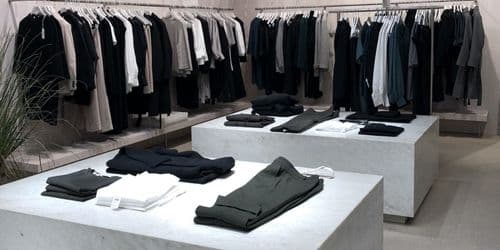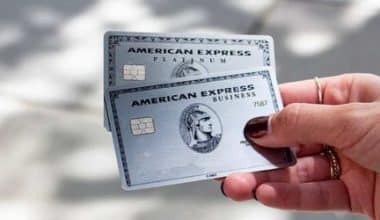To build a long-lasting business, a clothing brand requires more than just exquisite apparel design. It also requires all of the trappings of a successful business. Apparel retailers must be skilled in a variety of areas, including marketing, manufacturing, and retailing.
So, are you a fashion designer or an entrepreneur in the apparel industry? Let’s get started if you’re starting a clothing business (part-time or full-time) and want to know how to start a successful clothing brand.
This is the definitive guide to starting a clothing brand, covering topics such as design, sampling, production, packaging, developing a web presence, finding partners or investors, and much more. It’s also jam-packed with industry experts’ advice.
Starting a Clothing Brand in 10 Easy Steps: Step-by-Step Instructions
The great brands of the clothing industry were not put together piecemeal. Even when there was some trial and error, these brands almost certainly followed a business plan and continued to scale at a sustainable rate. Use this step-by-step guide to assist you in starting your own clothing business brand.
As you begin your clothing business journey, be prepared for peaks and valleys. Starting a new clothing brand from the ground up is never easy, but it is certainly doable. Keep in mind that all of today’s iconic brands began somewhere.
Step #1. Determine a market requirement.
A successful clothing line will not be built on the vanity of its founder. Consider a market niche that isn’t currently being filled. Is it a t-shirt that can be worn to a formal event? Is it a line of hoodies that highlight someone’s curves? Determine what products should exist that a major clothing company does not currently offer.
Step #2. Create a business plan.
A business plan will guide you throughout your entire career as a fashion designer and clothing manufacturer. Consider this: what is my ultimate goal for this product? Do I want to be a well-known brand sold in Nordstrom and Macy’s? Do I want to start a private label brand for a retailer like Target or H&M? Or, do I want to build a high-end brand that will be sold in a boutique on Melrose Avenue in Los Angeles or SoHo in New York City? Determine your goal and keep it in the forefront of your mind as you build your brand.
Step #3. Determine your target audience.
This step almost immediately follows the first. Your goal is to identify not only a clothing item that should exist but also the consumer market for that product. After all, brilliant design is useless if there are no potential customers. Consider the benefits and drawbacks of targeting specific demographics. Young people, for example, are style-conscious and may be more receptive to online marketing and word-of-mouth, but they may also have limited financial resources. Customers in their forties and fifties may be able to afford a higher price point, but they may be less concerned with style and already loyal to brand identity.
Step #4. Begin designing.
Assuming that this is your area of expertise, this is your chance to shine creatively. The first collection you release to the market will say a lot about you as a designer, so make sure it’s something you’d be proud to use as your calling card in the future. Think practically at the same time. Whatever your design must be produced in a cost-effective manner. Being a successful fashion designer requires a balance of the ideal and the achievable.
Step #5. Look for a clothing manufacturer.
Unless you intend to source, cut, and sew all of your materials yourself, you will require the services of a manufacturing partner. This could mean a variety of things. Perhaps you’re simply looking for collaborators to help you make clothing in your home studio. Maybe you’re looking for a fabric vendor. Maybe you’re looking for a fully operational factory that can produce a limited quantity of your boutique goods alongside mass-produced items from a well-known brand.
Clothing manufacturing has been based outside of the United States for decades. As a result, it’s possible that your search for a manufacturer will take you to China, Vietnam, Sri Lanka, or Bangladesh. You may wish to visit the factory in person, but for new designers on a tight budget, the entire vetting process will have to be completed over the phone and via email. If your fashion goals are modest, such as a new logo printed on top of existing streetwear or casual wear, you may be able to manufacture your goods locally, such as at a nearby print-on-demand screen printing facility.
Step #6. Make a decision on a brand name, logo, and market profile.
If it appears that your clothing items can be manufactured at a reasonable cost, you are ready to begin planning your public profile. This includes deciding on a business name, a logo, and, if necessary, a slogan. It entails creating a website using an eCommerce platform such as Shopify or Etsy. Customers prefer brands that tell a compelling story, so incorporating one into your brand name, logo, or website will also help. This work should be completed by the end of the manufacturing process. This way, you’ll be ready to sell your goods as soon as they’re finished.
Step #7. Set a price range for your items.
This step is related to identifying and comprehending your target audience. Choose a price point that covers your production costs while not alienating the customers you’ll need to get your fashion business off the ground.
Step #8. Commence the marketing process.
At this point, your new company requires brand recognition. Instagram has grown in popularity as a platform for this, with many Instagram influencers eager to promote new fashion brands in exchange for products.
Step #9. Establish attainable sales and distribution targets.
Don’t be afraid to collaborate with a business professional to take this step. Just because you have a fashion sense does not mean you understand clothing distribution. If you meet your sales targets, you can continue to expand in accordance with your business plan.
Step #10. Begin with a soft launch, and then seek additional investment and partnerships.
Once you’ve established a proof of concept—clothing that can be sold in limited quantities—you can approach potential business partners and co-investors. Yes, it would be ideal to own your company outright and keep all future profits. However, as most business owners begin to expand, they require access to capital. Taking on a business partner who can provide that capital in exchange for a percentage of future profits is the most traditional way to go about it.
What Does It Take To Start a Clothing Brand?
Because each clothing line is unique, prices will vary. However, you will need to budget for: your fashion brand design (logo, business cards, and website), license or permit fees, deposits, and rent for a physical work location if you plan to lease your workspace, basic clothing costs such as phone and internet service, invoicing software, marketing, and advertising costs, sewing or design tools (sewing machines, scissors, rulers, pattern makers, fabric printing accessories, t-shirt templates, etc., materials for y (among other expenses).
When Starting a Clothing Brand, What Should You Do First?
You must begin with an excellent clothing line concept. The fashion industry is highly competitive, and many products appear identical. So, if you want to compete and stand out, identify your niche and target audience, and then spend time developing a creative new line that your audience will enjoy.
How Many Pieces are Required For Starting a Clothing Brand?
For your first line, you should create a variety of pieces. For your first collection, aim to create ten to twelve styles. To provide enough variety, each style should have at least a few pieces.
Is a license required when starting a clothing brand?
According to the US Small Business Administration, almost every new business type requires some kind of license or permit, as we mentioned in the guide. The requirements will differ depending on where you live. For example, you may need a permit to sell and collect taxes. You should also register your business as an LLC or corporation to protect yourself from personal liability.
How much does it cost to manufacture clothing?
The cost of manufacturing varies. When producing clothing in a factory, you are attempting to produce large quantities. As a result, your per-unit costs may be quite high. A long sleeve crew neck sweater, for example, can cost between $70 and $75 to make, including sewing. A simple t-shirt, on the other hand, could cost $5.50 per unit for cotton tees and $6.50 for tri-blend tees.
How do you obtain legal ownership of a clothing brand?
To legally own a clothing brand, you must first establish a business and register it in your state and country of operation. You can also buy an existing clothing brand and sign over the business to yourself, but to be safe, consult a lawyer before doing so.
How do you launch a small clothing line from the comfort of your own home?
Starting a small clothing brand from home on your computer is simple. Because eCommerce stores do not require a physical location, you can build your own shop with Shopify or Wix without spending a lot of money upfront.
How do I start a luxury clothing brand?
Essentially, follow the same steps we outlined above for any clothing line. When trying to appeal to an affluent fashion market, however, there are some additional considerations.
For one thing, in this market, the impression you make as a fashion designer with your first collection of clothing is even more important. The support of high-status customers and influencers for your private label is critical to the success of your luxury brand name.
Quality is critical if you want your clothing line to stand out in this competitive fashion market. Your target customers want to know that they are getting a one-of-a-kind design that is superior to anything else on the market.
Remember that you are marketing a lifestyle, not just clothing. Consider the experience that your clothing line provides to your customers. Consider selling high-end accessories (purses, sunglasses, earrings, and so on) in addition to your clothing line.
Another way for a clothing line to appeal to high-end customers is through personalization. Learn about your customers’ preferences and try to provide them with a highly personalized experience. This will increase their loyalty to your clothing line and make them more likely to recommend it to others.
Another thing to consider: when starting a luxury clothing brand, your business plan will look very different. Customers who can afford luxury items are fewer in number, which means your clothing brand will sell less. Individual items will need to be priced higher to compensate for the lower sales volume.
How much money do clothing companies make?
When you first start your clothing line, it’s difficult to predict how much money you’ll make. The market is volatile, and what is hot today may be old news tomorrow.
It’s tempting to look at the few notable success stories where a clothing line made billions of dollars in a year.
Aside from that, clothing line revenue will vary depending on the item’s quality, production costs, and price points.
The revenue of clothing companies that have been successful for a number of years vary. Nordstrom, for example, made a net profit of $138 million in 2016. The Gap received $239 million, while L Brands received $181 million. However, given that these are industry leaders, this is probably not a realistic goal for a new clothing line just starting to start.
Even failing clothing businesses often get a second chance online after their brick-and-mortar locations close.
According to Ziprecruiter, the average annual salary for a clothing line is around $35,000, or $17 per hour.
Is there an app that allows you to design your own clothes?
There are several apps that can help you with the design process for your clothing company.
Here are a few examples.
- Pinterest: It serves as a mood board as well as a free collection of inspirational images curated by other users. These users have already done a lot of the legwork for you by adding items that can inspire designs for your clothing line and help you decide what to make. You only need to click to add them to your board.
- Adobe Illustrator: Despite its popularity as a graphic design tool, Adobe Illustrator also works well for flat drawing and sketching. It allows you to easily experiment with colors and patterns when designing your clothing line.
- Sketch is jam-packed with features and plugins that make it an incredibly easy-to-use tool for designers. And new design features are constantly being added to help you focus on what you want to create.
- Instagram and TikTok: When starting a clothing line, Instagram and TikTok are essential for good networking. It enables you to share photos of your designs and connect with other business owners, including customers.
- Shopify makes it simple to launch your own online store, connect with customers, and design the space with plenty of customization options for a one-of-a-kind shopping experience. It also facilitates shipping.
What do you call your clothing brand?
Your company name is an important component of your brand identity. It can make or break a clothing line in the fashion industry. You may use your own name, as is customary in the fashion industry. You can also hire naming experts to help you come up with a unique and powerful business name.
Conclusion
According to the entrepreneurs we interviewed, patience, adaptability, and dedication are essential characteristics for learning how to start and run your own clothing line.
Expect to face significant learning curves whether you have prior experience starting your own small business or not. Starting a clothing line from scratch isn’t always easy, and it presents unique challenges compared to other small businesses.
But if you’re dedicated enough, there’s nothing better than seeing your customers live their lives in your creations — and doing so on your own terms.
- FASHION BUSINESS: Best Ideas, Careers, Names, Courses (+ Startup tips)
- WEBSITES THAT ACCEPT APPLE PAY: All You Should Know and How It Works
- Most Valuable Fashion Brand [3 lessons to learn]
- Clothing Business Casual: All you need (+ quick tips)
- Christian Clothing Brands: (Top 10+ Best Christian Clothing Brands)






